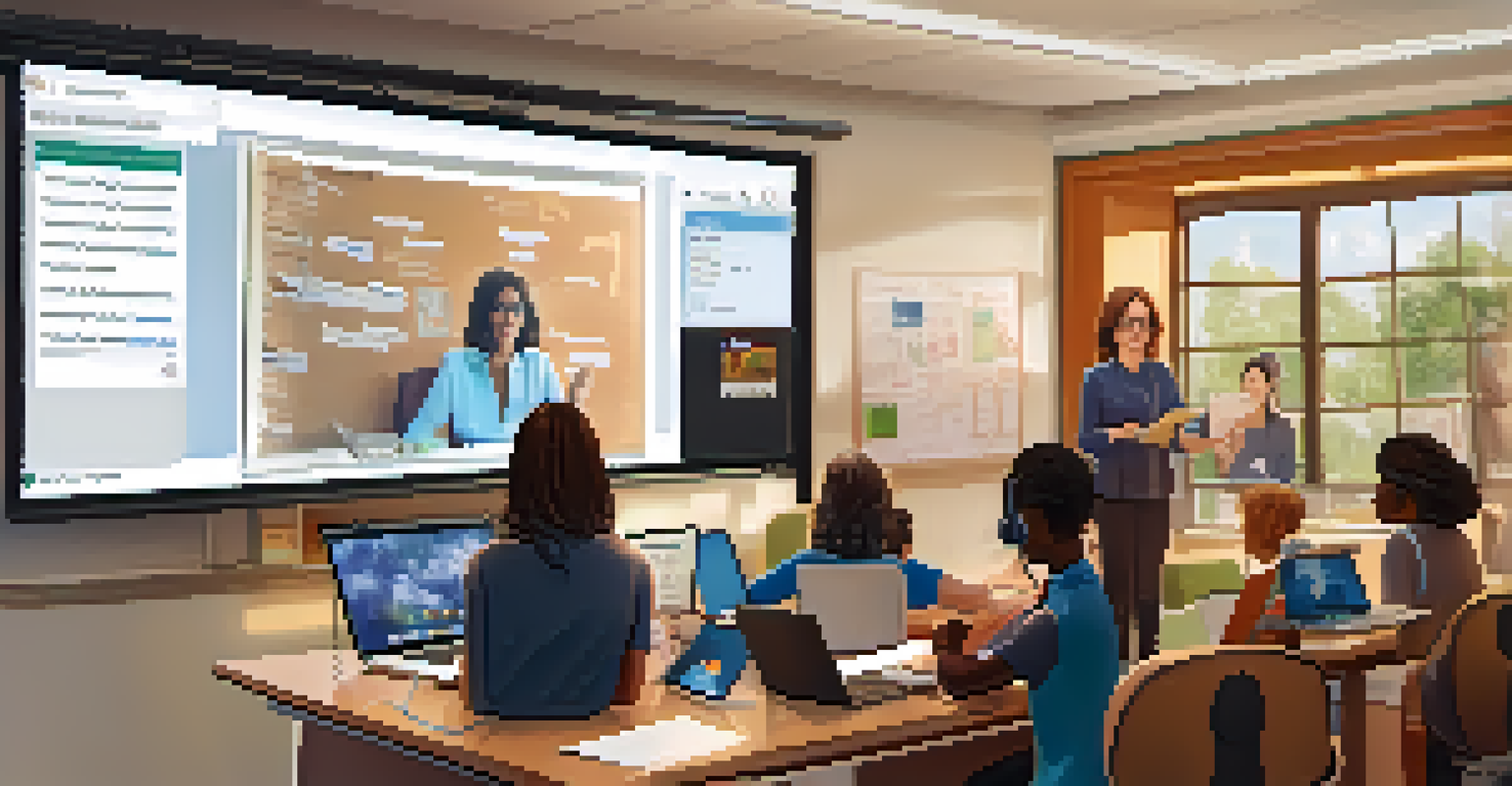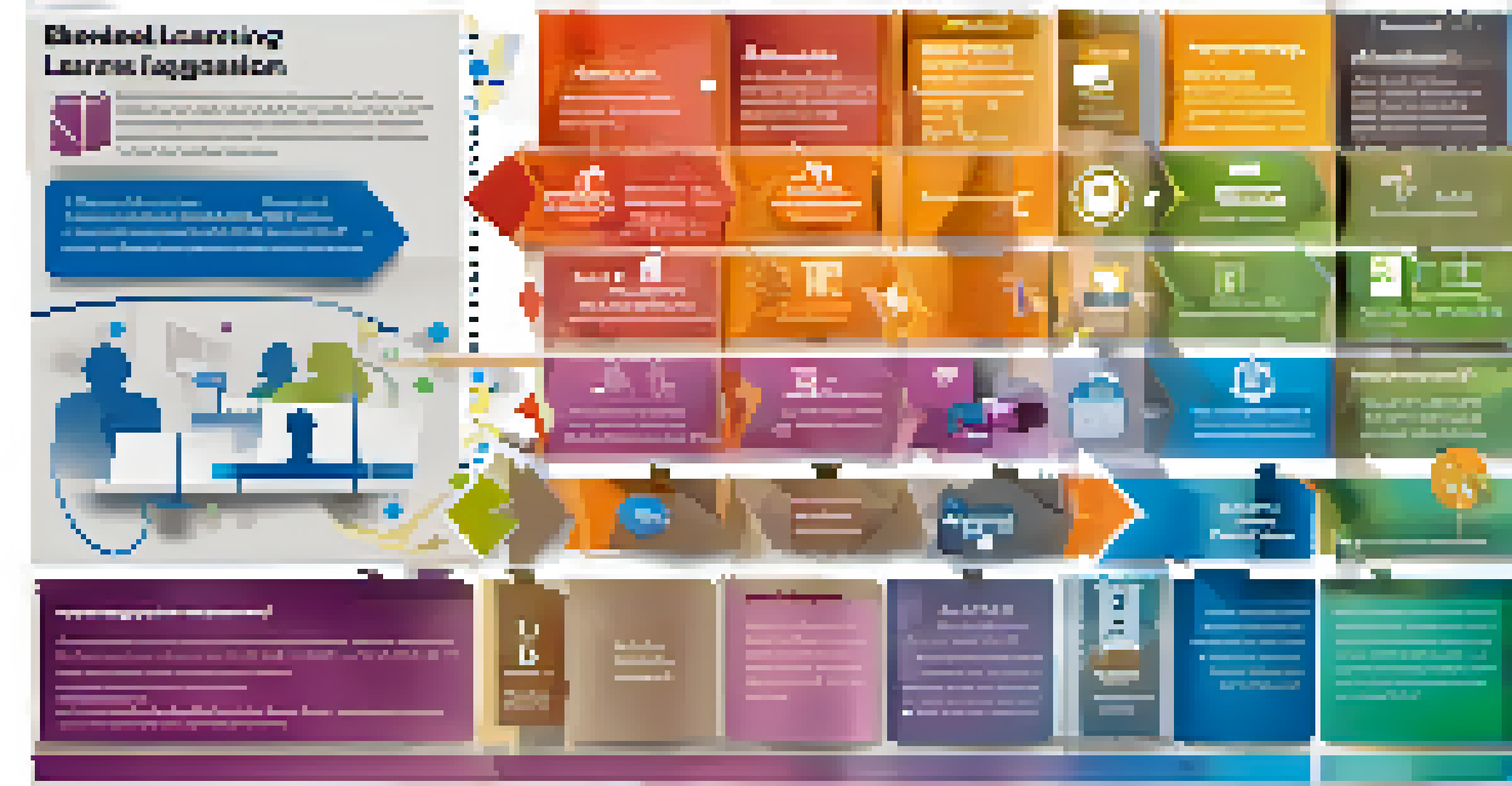Assessing Student Outcomes in Blended Learning Settings

Understanding Blended Learning and Its Importance
Blended learning combines traditional face-to-face instruction with online learning. This approach allows for greater flexibility and accessibility, catering to diverse student needs. By integrating digital tools into the classroom, educators can enhance engagement and personalize learning experiences.
Blended learning is not just a trend; it is a necessity for preparing students for their future in a digital world.
The importance of blended learning lies in its ability to prepare students for a technology-driven world. As digital literacy becomes essential, students must adapt to various learning environments. Blended learning not only promotes this adaptability but also fosters critical thinking and problem-solving skills.
Ultimately, understanding blended learning sets the stage for assessing student outcomes effectively. Educators must recognize how this model impacts learning dynamics, paving the way for targeted evaluation strategies.
Defining Student Outcomes in Blended Learning
Student outcomes refer to the knowledge, skills, and competencies students acquire through their educational experiences. In blended learning contexts, these outcomes can be multifaceted, encompassing both academic achievements and personal growth. Defining clear, measurable outcomes is crucial for effective assessment.

Different stakeholders may prioritize various aspects of student outcomes. For instance, educators might focus on academic performance, while parents may emphasize social skills and emotional well-being. This diversity highlights the need for a comprehensive approach to evaluation that considers multiple dimensions of student development.
Blended Learning Enhances Flexibility
Blended learning combines in-person and online instruction, offering greater flexibility and accessibility to meet diverse student needs.
By establishing specific outcomes, educators can align their teaching methods and assessment tools with desired goals. This clarity helps in tracking progress and making informed decisions about instructional strategies.
Choosing the Right Assessment Methods
Selecting appropriate assessment methods is vital for evaluating student outcomes in blended learning. Various techniques, such as formative and summative assessments, can provide insights into student understanding and progress. Formative assessments, like quizzes and discussions, offer ongoing feedback, while summative assessments evaluate overall learning at the end of a unit.
Feedback is the breakfast of champions in the learning process.
Additionally, incorporating self-assessment and peer assessment can empower students to take ownership of their learning. These methods encourage reflection and critical thinking, allowing learners to identify their strengths and areas for improvement. By fostering a growth mindset, students become more engaged in their learning journey.
Ultimately, a mix of assessment methods will yield a more comprehensive picture of student outcomes. This blended approach ensures that educators can capture diverse learning experiences and adapt their strategies accordingly.
Utilizing Data Analytics for Insightful Assessments
Data analytics plays a crucial role in assessing student outcomes in blended learning environments. By analyzing various data points, such as test scores, participation rates, and engagement metrics, educators can identify trends and patterns in student performance. This information is invaluable for tailoring instruction to meet individual needs.
For instance, learning management systems often provide analytics that track student progress over time. By leveraging these insights, educators can pinpoint areas where students may be struggling and adjust their teaching methods accordingly. This proactive approach fosters a more supportive learning environment.
Data Analytics for Tailored Assessments
Utilizing data analytics enables educators to identify trends in student performance, allowing for personalized instruction and support.
Moreover, data analytics can help in setting benchmarks and measuring progress against them. By establishing clear goals and tracking performance, educators can ensure that students are on the right path to achieving desired outcomes.
Creating a Feedback Loop for Continuous Improvement
Establishing a feedback loop is essential for continuous improvement in blended learning settings. By regularly gathering feedback from students, educators can gain valuable insights into the effectiveness of their teaching methods and assessment strategies. This process encourages collaboration and adaptability within the learning environment.
Feedback can take various forms, including surveys, one-on-one check-ins, or group discussions. By creating a safe space for students to share their thoughts, educators can identify strengths and areas for growth. This open dialogue fosters a sense of community and supports student engagement.
Incorporating feedback into instructional practices not only enhances student outcomes but also empowers educators to refine their approaches. This cycle of reflection and adaptation is key to creating a dynamic learning experience.
Addressing Challenges in Assessing Student Outcomes
Assessing student outcomes in blended learning can present unique challenges. One common issue is the potential for inconsistencies in how students engage with online and in-person components. This variability can make it difficult to gauge overall understanding and achievement.
Additionally, technology-related barriers, such as access to devices or internet connectivity, can impact student performance. Educators must be mindful of these challenges and strive to create equitable learning opportunities for all students. This may involve providing additional resources or support for those who need it.
Continuous Feedback Drives Improvement
Establishing a feedback loop helps educators refine their teaching strategies and enhance student engagement through open communication.
By proactively addressing these challenges, educators can develop more effective assessment strategies that accurately reflect student outcomes. This commitment to equity and adaptability is essential for fostering a successful blended learning environment.
The Role of Educators in Student Outcome Assessment
Educators play a pivotal role in assessing student outcomes within blended learning settings. Their expertise in understanding individual student needs and learning styles allows them to tailor assessments effectively. By fostering a supportive environment, educators can motivate students to reach their full potential.
Moreover, professional development is crucial for educators to stay updated on best practices in assessment. Engaging in ongoing training can equip them with the latest tools and techniques for evaluating student outcomes. This commitment to lifelong learning ultimately benefits both educators and their students.

In essence, the role of educators extends beyond instruction; they are also key facilitators of assessment. Their ability to adapt and respond to student needs is vital for promoting success in blended learning environments.